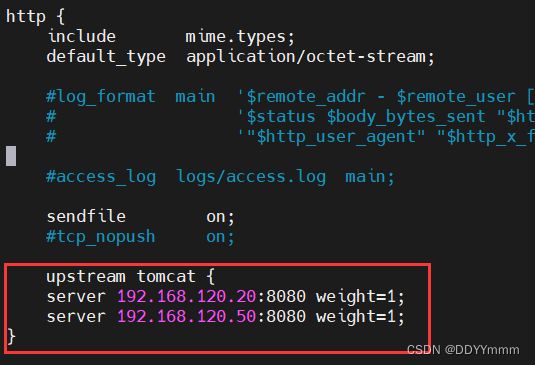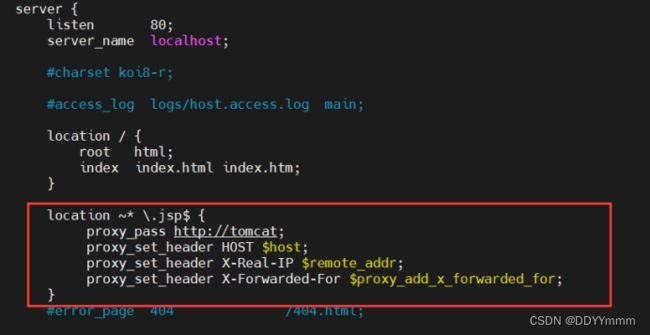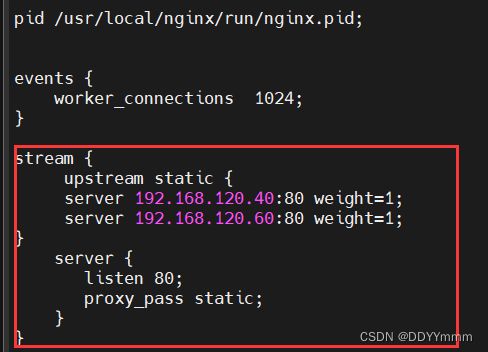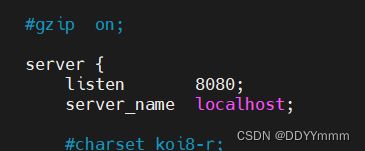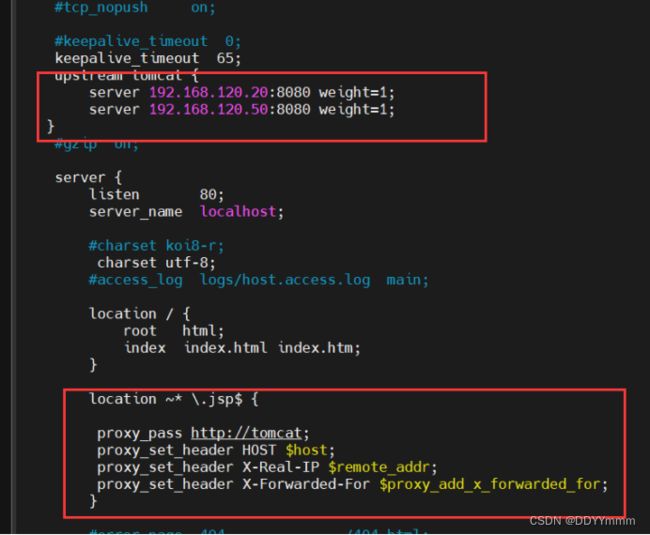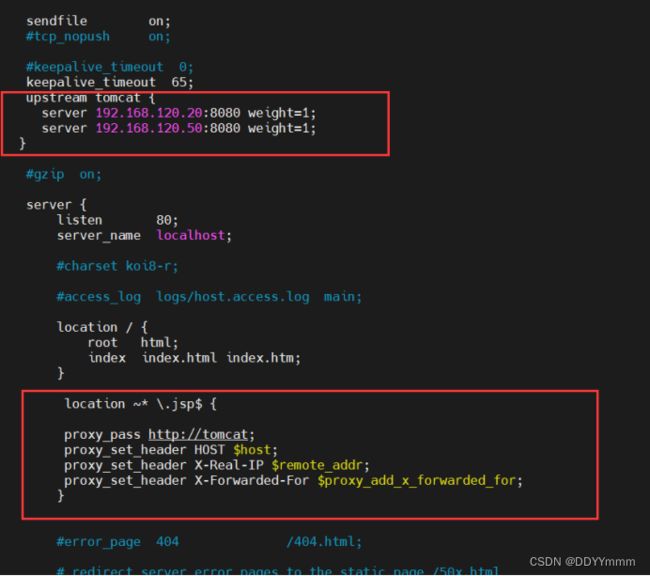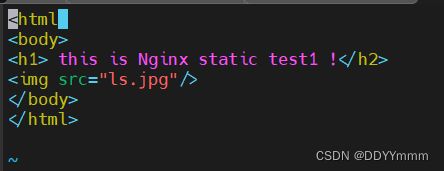#作者:闫乾苓文章目录1.版本选择Ceph版本发布历史目前官方在维护的版本2.部署方法3.服务器规划4.前置配置4.1系统更新4.2配置hostscat>>/etc/hosts>/etc/hosts/etc/chrony.conf/etc/chrony.conf/etc/os-release<
create-react-app创建的项目中设置webpack配置
沃野_juededa
react.jswebpack前端
create-react-app创建的项目默认使用的是react-scripts(存在于node_modules文件夹中)来处理开发服务器和构建,它内置了一些webpack相关配置。一般不会暴露出来给开发者,但是在有些情况下我们需要修改下webpack默认配置,如修改outputPath、sourcemap方案等,但由于eject是不可逆的,所以craco插件应运而生,为我们提供了更好的解决方案。
http 从请求到响应的过程中发生了什么
沃野_juededa
http网络协议网络
DNS域名解析:当用户在浏览器地址栏输入网址时,浏览器首先会尝试从自身的DNS缓存中查找域名的IP地址。如果缓存中没有找到,浏览器会向系统DNS缓存、hosts文件以及本地DNS服务器发起查询请求,最终获取到域名的IP地址。TCP三次握手:浏览器与服务器建立TCP连接,这个过程称为三次握手。服务器监听端口,客户端发送SYN包请求连接,服务器响应SYN+ACK包,客户端再次发送ACK包确认
技术转管理,需要克服的4大硬伤!
项目经理刘湖南
职场和发展
许多技术人员都会主动规划自己的职业发展路径,而晋升管理岗,向项目经理或者产品经理转型,是大多数技术人才的选择。然而,技术思维和管理思维存在较大的差异。从技术转管理,有四大难点。一、角色转换难技术人员作为执行层,专注的是技术实现与细节把控,只要专心做好自己份内的事即可。比如,开发工程师要保证代码质量,运维工程师负责系统稳定性。而项目经理或者产品经理作为组织者,需要建立全局视角和系统思维,带领团队成员
Ubuntu连接到SSH(live server和desktop版本同样适用)适用于20-24各个版本
郑梓妍
Linux系统运维ubuntusshlinux
SSH(SecureShell)是一种网络协议,用于在客户端和服务器之间建立加密连接。在Ubuntu系统中,通过SSH远程连接可以方便地执行管理任务,如文件传输和系统维护。以下是在Ubuntu中设置SSH远程连接的步骤。安装和启动SSH服务首先,需要在Ubuntu系统上安装openssh-server包。可以通过以下命令进行安装:sudoaptupdatesudoaptinstallopenssh
B/S架构(Browser/Server)与C/S架构(Client/Server)
张太行_
服务器运维
基本概念B/S架构(Browser/Server):即浏览器/服务器架构。在这种架构中,用户通过浏览器(如Chrome、Firefox、Safari等)访问服务器上的应用程序。服务器端负责处理业务逻辑、存储数据等核心功能,浏览器主要用于向用户展示数据和接收用户输入。例如,一个在线邮箱系统,用户在浏览器中输入邮箱网址,登录后就可以收发邮件。服务器会处理邮件的发送、接收、存储等操作,而浏览器则将邮件的
阿里云ECS服务器挂载数据盘教程(Linux)
A5云服务商
服务器阿里云linux云计算运维运维开发
阿里云ECS服务器挂载数据盘教程(Linux)在阿里云上挂载磁盘的过程可以分为几个步骤。以下是一个详细的教程,帮助你在阿里云的云服务器(ECS)上挂载磁盘。如需要阿里云的代理商可以联系我,主页有信息,阿里云可返20个点。步骤1:创建并挂载云盘登录阿里云控制台访问阿里云控制台并使用你的账号登录。创建云盘在控制台左侧菜单中,选择“云服务器ECS”。找到并选择你要挂载磁盘的实例。在实例详情页面,点击“云
告别繁琐!5分钟搞定Linux上MySQL 8安装,小白也能轻松上手!
IT_狂奔者
Databaseslinuxmysql运维
概述MySQL是一个广泛使用的开源关系型数据库管理系统,适用于各种规模的应用程序。MySQL8引入了许多新特性和性能改进,因此在Linux服务器上安装MySQL8是一个常见的需求。本文将指导大家如何在Linux系统上安装MySQL8,并假设已经完成了安装过程。我们将重点放在安装后的配置和使用上。目录概述一、安装MySQL8.x及配置1.1安装1.2使用方法1.2.1赋予执行权限1.2.2运行脚本1
HoRain云--无需修改BIOS!Linux系统迁移根目录到新磁盘终极指南
HoRain 云小助手
linux运维服务器
HoRain云小助手:个人主页⛺️生活的理想,就是为了理想的生活!⛳️推荐前些天发现了一个超棒的服务器购买网站,性价比超高,大内存超划算!忍不住分享一下给大家。点击跳转到网站。目录⛳️推荐一、原理简析二、操作步骤(以Ubuntu为例)1.准备工作2.临时挂载新磁盘3.修改GRUB配置4.更新引导配置5.验证配置(重要!)三、故障排查(附解决方案)四、永久生效设置五、注意事项一、原理简析通过GRUB
HoRain云--URI vs URL vs URN:彻底搞懂三者的区别与联系
HoRain 云小助手
java前端开发语言
HoRain云小助手:个人主页⛺️生活的理想,就是为了理想的生活!⛳️推荐前些天发现了一个超棒的服务器购买网站,性价比超高,大内存超划算!忍不住分享一下给大家。点击跳转到网站。目录⛳️推荐URIvsURLvsURN:彻底搞懂三者的区别与联系一、核心概念解析1.URI(统一资源标识符)2.URL(统一资源定位符)3.URN(统一资源名称)二、三者关系图解三、关键区别对比表四、日常应用场景五、技术冷知
HTTPS通信(握手)过程
IT运维成长心得
https网络协议
HTTPS通信(即超文本传输安全协议)的握手过程是确保通信双方安全交换数据的关键步骤。以下是HTTPS握手过程的详细步骤:客户端发起请求:客户端(通常是浏览器)向服务器发起HTTPS请求。服务器响应:服务器收到请求后,会回应一个数字证书。这个证书是由一个受信任的第三方(证书颁发机构,CA)签发的,包含了服务器的公钥、服务器信息以及CA的签名。客户端验证证书:客户端使用内置的CA证书库来验证服务器的
HoRain云--Node.js文件下载服务实战:Express实现安全高效的文件传输
HoRain云小助手
node.jsexpress安全
HoRain云小助手:个人主页个人专栏:《Linux系列教程》《c语言教程》⛺️生活的理想,就是为了理想的生活!⛳️推荐前些天发现了一个超棒的服务器购买网站,性价比超高,大内存超划算!忍不住分享一下给大家。点击跳转到网站。专栏介绍专栏名称专栏介绍《C语言》本专栏主要撰写C干货内容和编程技巧,让大家从底层了解C,把更多的知识由抽象到简单通俗易懂。《网络协议》本专栏主要是注重从底层来给大家一步步剖析网
HarmonyNext实战:基于ArkTS的高性能网络请求与缓存优化案例详解
harmonyos-next
HarmonyNext实战:基于ArkTS的高性能网络请求与缓存优化案例详解在现代移动应用开发中,网络请求是不可避免的核心功能之一。然而,频繁的网络请求不仅会增加服务器负担,还会影响应用的性能和用户体验。HarmonyOSNext提供了强大的网络请求框架和缓存机制,帮助开发者优化网络请求性能。本文将深入探讨如何在HarmonyOSNext中使用ArkTS实现高性能网络请求与缓存优化。通过一个完整的
Linux修改/设置服务器ip地址
大橙子房
Linuxlinux服务器centos
1.用户切换到root用户su-#普通用户切换到root用户2.cd到network-scripts目录下cd/etc/sysconfig/network-scriptsll#ll查看文件目录#找到ifcfg-exx这个格式的文件,我这里的是ifcfg-ens33#大家可能都不相同,但是前面的ifcfg-exx这些是一样的3.编辑ifcfg-ens33(每个人的文件名都不一样,要自己看文件名是什么
YashanDB日志收集
数据库
日志收集命令主要是一键收集节点的日志,把远端服务器上的节点的日志统一打包发送到本地服务器。日志收集命令仅适用于通过yasboot安装的数据库,否则需要先对该数据库进行托管。示例./bin/yasbootclusterlog-cyashandbstart:2023-07-2800:00:00end:2023-07-2820:11:19type|uuid|name|hostid|index|statu
Redis查看所有key的命令
abckingaa
BeeDBredis数据库database
Redis查看所有key的命令keys*启动了Redis服务器和客户端,在客户端输入keys*即可(若需要密码登录,先输入密码)Bee,互联网新时代的JavaORM工具,更快、更简单、更自动,开发速度快,运行快,更智能!Bee让程序员/软件工程师,从手工编码中解放出来,Bee更适合智能软件制造时代!十分钟即可入门!立志做最懂用户的软件!
脚本一键式启动Nginx、Mysql、Redis
小白写代码hh
nginxmysqlredis容器
此脚本包含拉取镜像、数据卷挂载、容器启动三大部分,可一键式安装三大环境新建一个depoy.sh文件在服务器上,然后复制以下内容。给脚本文件添加执行权限chmod+xdepoy.sh#文件的当前目录下如果需要修改数据库MYSQL密码和Reids密码MYSQL_ROOT_PASSWORD="1459Hyh."requirepass1459Hyh.#!/bin/bash#1️⃣检查是否安装Docker&
华为OD2023(A卷)基础题21【日志采集系统】
大司码
算法华为od
日志采集系统题目日志采集是运维系统的的核心组件。日志是按行生成,每行记做一条,由采集系统分批上报。如果上报太频繁,会对服务端造成压力;如果上报太晚,会降低用户的体验;如果一次上报的条数太多,会导致超时失败。为此,项目组设计了如下的上报策略:每成功上报一条日志,奖励1分每条日志每延迟上报1秒,扣1分积累日志达到100条,必须立即上报给出日志序列,根据该规则,计算首次上报能获得的最多积分数。输入按时序
华为OD机试真题----日志采集(java)
努力努力再努力呐
算法华为od算法数据结构java
华为OD机试真题中的“日志采集”是一个重要的题目,它主要考察的是如何在满足特定条件下,优化日志上报策略以获取最大积分。以下是对该题目的详细解析:一、题目背景日志采集是运维系统的核心组件,日志是按行生成,每行记做一条,由采集系统分批上报。上报策略的设计需要平衡多个因素:上报频率、服务端压力、用户体验以及避免超时失败。二、上报策略根据题目描述,项目组设计了以下上报策略:奖励机制:每成功上报一条日志,奖
IT圈大实话!卷运维不如卷网络安全,这可能是你转行的最后的机会
程序员晓晓
运维web安全干货分享计算机网络安全渗透测试职场发展
前言2025年马上进入金三银四的行情,最近我也去问了一下行业内的小伙伴,我发现最近很多从事运维的选择了辞职,转行到了网络安全这个发展路线。说实话,运维工程师这个岗位在IT行业里面确实是处于最底层的,不管什么环节出现问题,基本都是运维背锅。,薪资水平也比不上别的岗位。一般运维的薪资水平大多数都是6-9K,还要高频出差年轻的时候干几年确实还可以,但是成家立业之后就不合适到处出差了。运维的事情非常多,不
python实现http协议
ajie1117
pythonhttp开发语言
在Python中,可以使用socket库实现一个简单的HTTP服务器和客户端,手动处理HTTP请求和响应。下面是一个Python版本的HTTP服务器和客户端示例。一、使用socket实现HTTP服务器HTTP服务器的基本原理是监听指定端口,等待客户端请求,解析HTTP请求,并返回HTTP响应。简单的HTTP服务器importsocketdefrun_http_server(host='127.0.
Objective-C语言的网络编程
俞嫦曦
包罗万象golang开发语言后端
Objective-C语言中的网络编程引言Objective-C是一种面向对象的编程语言,广泛应用于iOS和macOS应用程序的开发。随着移动互联网的快速发展,网络编程成为了现代应用程序开发中不可或缺的一部分。无论是从服务器获取数据、上传文件,还是实现实时通信,网络编程都扮演着至关重要的角色。本文将深入探讨Objective-C语言中的网络编程,涵盖从基础的网络请求到高级的异步处理、安全通信等内容
华为OD机试 - 日志采集系统(Python/JS/C/C++ 2024 E卷 100分)
哪 吒
华为odpythonjavascript
华为OD机试2024E卷题库疯狂收录中,刷题点这里专栏导读本专栏收录于《华为OD机试真题(Python/JS/C/C++)》。刷的越多,抽中的概率越大,私信哪吒,备注华为OD,加入华为OD刷题交流群,每一题都有详细的答题思路、详细的代码注释、3个测试用例、为什么这道题采用XX算法、XX算法的适用场景,发现新题目,随时更新。一、题目描述日志采集是运维系统的的核心组件。日志是按行生成,每行记做一条,由
python 使用Nginx和uWSGI来运行Python应用
weixin_33738555
运维python操作系统
参考:http://zmrenwu.com/post/20/uWSGI是一个Web应用服务器,它具有应用服务器,代理,进程管理及应用监控等功能。它支持WSGI协议,同时它也支持自有的uWSGI协议,该协议据说性能非常高,而且内存占用率低,为mod_wsgi的一半左右,我没有实测过。它还支持多应用的管理及应用的性能监控。虽然uWSGI本身就可以直接用来当Web服务器,但一般建议将其作为应用服务器配合
【数据库】MySQL备份与恢复策略:确保数据安全必备技能
千益
数据库数据库mysql
在数据库管理中,数据是企业最宝贵的资产之一。无论是硬件故障、人为错误还是恶意攻击,数据丢失都可能对业务造成灾难性影响。因此,制定并实施有效的备份与恢复策略是确保数据安全的关键。本文将深入探讨MySQL备份与恢复的最佳实践,并通过丰富的实际案例帮助您理解如何在实际场景中应用这些策略。一、为什么需要备份与恢复策略?1.数据丢失的常见原因硬件故障:磁盘损坏、服务器宕机等。人为错误:误删数据、错误操作等。
Linux运维技术之Linux云计算架构
极客事纪
Linux《Linux一学就会》程序员linux运维服务器
我以下图为基础,说明Linux的架构(architecture)。最内层是硬件,最外层是用户常用的应用,比如说firefox浏览器,evolution查看邮件,一个计算流体模型等等。硬件是物质基础,而应用提供服务。但在两者之间,还要经过一番周折。还记得Linux启动。Linux首先启动内核(kernel),内核是一段计算机程序,这个程序直接管理管理硬件,包括CPU、内存空间、硬盘接口、网络接口等等
什么是站群服务器?站群服务器应该怎么选?
莱卡云(Lcayun)
服务器github运维linux云计算
站群服务器是专门用于托管和管理多个网站的服务器。通常用于SEO优化、内容分发、广告推广等场景,用户可以通过一个服务器管理多个站点,提升效率并降低成本。选择站群服务器时,需根据业务需求、性能要求、IP资源等因素进行综合考虑。什么是站群服务器?站群服务器是一种支持多个独立网站运行的服务器,通常具备以下特点:多IP支持:每个网站可以分配独立的IP地址,避免IP关联问题。资源隔离:确保每个网站的资源(如C
搭建内网DNS服务器
小卓笔记
服务器linux运维
1.1实验目的在内网服务器可以实现使用域名进行上网主机角色系统IPdns-client客户端redhat9.5192.168.33.7dns-server域名解析服务器rocky9.5192.168.33.1001.2环境准备#rocky#安装net-toolsbash-completionvim(rocky未自带这些服务)[root@dns-server~]#dnfinstallnet-tool
xxl-job 执行器端服务器的简单搭建
一切随缘~~~
xxl-jobxxljob
xxl-job执行器端服务器的简单搭建先讲一下我们平时怎么使用xxl-job的,再引出背后是如何实现的。我觉得对于一款成功的框架来说,好用,是非常重要的一个特性。框架要便于接入,便于使用。对于用户来说,不要有太多的使用成本,最好是能够开箱即用,快速上手的。Java为什么这么流行呢?因为它的生态好。说是生态好,其实就是Spring那一套嘛,后面又有了SpringBoot。你想要使用什么组件,市面上基
制造业数字化转型之工业级远程控制方案选型指南
2501_90729959
RayLink远程控制软件远程控制云计算网络
在“中国制造2025”战略和“双碳”目标的推动下,制造业的数字化转型已经成为了企业提升竞争力、实现高质量发展的关键路径。工业级远程控制方案作为转型的关键支撑技术,通过设备互联、数据驱动和智能运维,正在改变传统的生产管理模式。今天,我们就围绕远程控制技术,结合行业实践和政策导向,为企业提供一份选型指南。一、数字化转型背景下的远程控制需求制造业对远程控制的需求,主要来自三大核心场景:生产设备运维、跨地
多线程编程之理财
周凡杨
java多线程生产者消费者理财
现实生活中,我们一边工作,一边消费,正常情况下会把多余的钱存起来,比如存到余额宝,还可以多挣点钱,现在就有这个情况:我每月可以发工资20000万元 (暂定每月的1号),每月消费5000(租房+生活费)元(暂定每月的1号),其中租金是大头占90%,交房租的方式可以选择(一月一交,两月一交、三月一交),理财:1万元存余额宝一天可以赚1元钱,
[Zookeeper学习笔记之三]Zookeeper会话超时机制
bit1129
zookeeper
首先,会话超时是由Zookeeper服务端通知客户端会话已经超时,客户端不能自行决定会话已经超时,不过客户端可以通过调用Zookeeper.close()主动的发起会话结束请求,如下的代码输出内容
Created /zoo-739160015
CONNECTEDCONNECTED
.............CONNECTEDCONNECTED
CONNECTEDCLOSEDCLOSED
SecureCRT快捷键
daizj
secureCRT快捷键
ctrl + a : 移动光标到行首ctrl + e :移动光标到行尾crtl + b: 光标前移1个字符crtl + f: 光标后移1个字符crtl + h : 删除光标之前的一个字符ctrl + d :删除光标之后的一个字符crtl + k :删除光标到行尾所有字符crtl + u : 删除光标至行首所有字符crtl + w: 删除光标至行首
Java 子类与父类这间的转换
周凡杨
java 父类与子类的转换
最近同事调的一个服务报错,查看后是日期之间转换出的问题。代码里是把 java.sql.Date 类型的对象 强制转换为 java.sql.Timestamp 类型的对象。报java.lang.ClassCastException。
代码:
可视化swing界面编辑
朱辉辉33
eclipseswing
今天发现了一个WindowBuilder插件,功能好强大,啊哈哈,从此告别手动编辑swing界面代码,直接像VB那样编辑界面,代码会自动生成。
首先在Eclipse中点击help,选择Install New Software,然后在Work with中输入WindowBui
web报表工具FineReport常用函数的用法总结(文本函数)
老A不折腾
finereportweb报表工具报表软件java报表
文本函数
CHAR
CHAR(number):根据指定数字返回对应的字符。CHAR函数可将计算机其他类型的数字代码转换为字符。
Number:用于指定字符的数字,介于1Number:用于指定字符的数字,介于165535之间(包括1和65535)。
示例:
CHAR(88)等于“X”。
CHAR(45)等于“-”。
CODE
CODE(text):计算文本串中第一个字
mysql安装出错
林鹤霄
mysql安装
[root@localhost ~]# rpm -ivh MySQL-server-5.5.24-1.linux2.6.x86_64.rpm Preparing... #####################
linux下编译libuv
aigo
libuv
下载最新版本的libuv源码,解压后执行:
./autogen.sh
这时会提醒找不到automake命令,通过一下命令执行安装(redhat系用yum,Debian系用apt-get):
# yum -y install automake
# yum -y install libtool
如果提示错误:make: *** No targe
中国行政区数据及三级联动菜单
alxw4616
近期做项目需要三级联动菜单,上网查了半天竟然没有发现一个能直接用的!
呵呵,都要自己填数据....我了个去这东西麻烦就麻烦的数据上.
哎,自己没办法动手写吧.
现将这些数据共享出了,以方便大家.嗯,代码也可以直接使用
文件说明
lib\area.sql -- 县及县以上行政区划分代码(截止2013年8月31日)来源:国家统计局 发布时间:2014-01-17 15:0
哈夫曼加密文件
百合不是茶
哈夫曼压缩哈夫曼加密二叉树
在上一篇介绍过哈夫曼编码的基础知识,下面就直接介绍使用哈夫曼编码怎么来做文件加密或者压缩与解压的软件,对于新手来是有点难度的,主要还是要理清楚步骤;
加密步骤:
1,统计文件中字节出现的次数,作为权值
2,创建节点和哈夫曼树
3,得到每个子节点01串
4,使用哈夫曼编码表示每个字节
JDK1.5 Cyclicbarrier实例
bijian1013
javathreadjava多线程Cyclicbarrier
CyclicBarrier类
一个同步辅助类,它允许一组线程互相等待,直到到达某个公共屏障点 (common barrier point)。在涉及一组固定大小的线程的程序中,这些线程必须不时地互相等待,此时 CyclicBarrier 很有用。因为该 barrier 在释放等待线程后可以重用,所以称它为循环的 barrier。
CyclicBarrier支持一个可选的 Runnable 命令,
九项重要的职业规划
bijian1013
工作学习
一. 学习的步伐不停止 古人说,活到老,学到老。终身学习应该是您的座右铭。 世界在不断变化,每个人都在寻找各自的事业途径。 您只有保证了足够的技能储
【Java范型四】范型方法
bit1129
java
范型参数不仅仅可以用于类型的声明上,例如
package com.tom.lang.generics;
import java.util.List;
public class Generics<T> {
private T value;
public Generics(T value) {
this.value =
【Hadoop十三】HDFS Java API基本操作
bit1129
hadoop
package com.examples.hadoop;
import org.apache.hadoop.conf.Configuration;
import org.apache.hadoop.fs.FSDataInputStream;
import org.apache.hadoop.fs.FileStatus;
import org.apache.hadoo
ua实现split字符串分隔
ronin47
lua split
LUA并不象其它许多"大而全"的语言那样,包括很多功能,比如网络通讯、图形界面等。但是LUA可以很容易地被扩展:由宿主语言(通常是C或 C++)提供这些功能,LUA可以使用它们,就像是本来就内置的功能一样。LUA只包括一个精简的核心和最基本的库。这使得LUA体积小、启动速度快,从 而适合嵌入在别的程序里。因此在lua中并没有其他语言那样多的系统函数。习惯了其他语言的字符串分割函
java-从先序遍历和中序遍历重建二叉树
bylijinnan
java
public class BuildTreePreOrderInOrder {
/**
* Build Binary Tree from PreOrder and InOrder
* _______7______
/ \
__10__ ___2
/ \ /
4
openfire开发指南《连接和登陆》
开窍的石头
openfire开发指南smack
第一步
官网下载smack.jar包
下载地址:http://www.igniterealtime.org/downloads/index.jsp#smack
第二步
把smack里边的jar导入你新建的java项目中
开始编写smack连接openfire代码
p
[移动通讯]手机后盖应该按需要能够随时开启
comsci
移动
看到新的手机,很多由金属材质做的外壳,内存和闪存容量越来越大,CPU速度越来越快,对于这些改进,我们非常高兴,也非常欢迎
但是,对于手机的新设计,有几点我们也要注意
第一:手机的后盖应该能够被用户自行取下来,手机的电池的可更换性应该是必须保留的设计,
20款国外知名的php开源cms系统
cuiyadll
cms
内容管理系统,简称CMS,是一种简易的发布和管理新闻的程序。用户可以在后端管理系统中发布,编辑和删除文章,即使您不需要懂得HTML和其他脚本语言,这就是CMS的优点。
在这里我决定介绍20款目前国外市面上最流行的开源的PHP内容管理系统,以便没有PHP知识的读者也可以通过国外内容管理系统建立自己的网站。
1. Wordpress
WordPress的是一个功能强大且易于使用的内容管
Java生成全局唯一标识符
darrenzhu
javauuiduniqueidentifierid
How to generate a globally unique identifier in Java
http://stackoverflow.com/questions/21536572/generate-unique-id-in-java-to-label-groups-of-related-entries-in-a-log
http://stackoverflow
php安装模块检测是否已安装过, 使用的SQL语句
dcj3sjt126com
sql
SHOW [FULL] TABLES [FROM db_name] [LIKE 'pattern']
SHOW TABLES列举了给定数据库中的非TEMPORARY表。您也可以使用mysqlshow db_name命令得到此清单。
本命令也列举数据库中的其它视图。支持FULL修改符,这样SHOW FULL TABLES就可以显示第二个输出列。对于一个表,第二列的值为BASE T
5天学会一种 web 开发框架
dcj3sjt126com
Web框架framework
web framework层出不穷,特别是ruby/python,各有10+个,php/java也是一大堆 根据我自己的经验写了一个to do list,按照这个清单,一条一条的学习,事半功倍,很快就能掌握 一共25条,即便很磨蹭,2小时也能搞定一条,25*2=50。只需要50小时就能掌握任意一种web框架
各类web框架大同小异:现代web开发框架的6大元素,把握主线,就不会迷路
建议把本文
Gson使用三(Map集合的处理,一对多处理)
eksliang
jsongsonGson mapGson 集合处理
转载请出自出处:http://eksliang.iteye.com/blog/2175532 一、概述
Map保存的是键值对的形式,Json的格式也是键值对的,所以正常情况下,map跟json之间的转换应当是理所当然的事情。 二、Map参考实例
package com.ickes.json;
import java.lang.refl
cordova实现“再点击一次退出”效果
gundumw100
android
基本的写法如下:
document.addEventListener("deviceready", onDeviceReady, false);
function onDeviceReady() {
//navigator.splashscreen.hide();
document.addEventListener("b
openldap configuration leaning note
iwindyforest
configuration
hostname // to display the computer name
hostname <changed name> // to change
go to: /etc/sysconfig/network, add/modify HOSTNAME=NEWNAME to change permenately
dont forget to change /etc/hosts
Nullability and Objective-C
啸笑天
Objective-C
https://developer.apple.com/swift/blog/?id=25
http://www.cocoachina.com/ios/20150601/11989.html
http://blog.csdn.net/zhangao0086/article/details/44409913
http://blog.sunnyxx
jsp中实现参数隐藏的两种方法
macroli
JavaScriptjsp
在一个JSP页面有一个链接,//确定是一个链接?点击弹出一个页面,需要传给这个页面一些参数。//正常的方法是设置弹出页面的src="***.do?p1=aaa&p2=bbb&p3=ccc"//确定目标URL是Action来处理?但是这样会在页面上看到传过来的参数,可能会不安全。要求实现src="***.do",参数通过其他方法传!//////
Bootstrap A标签关闭modal并打开新的链接解决方案
qiaolevip
每天进步一点点学习永无止境bootstrap纵观千象
Bootstrap里面的js modal控件使用起来很方便,关闭也很简单。只需添加标签 data-dismiss="modal" 即可。
可是偏偏有时候需要a标签既要关闭modal,有要打开新的链接,尝试多种方法未果。只好使用原始js来控制。
<a href="#/group-buy" class="btn bt
二维数组在Java和C中的区别
流淚的芥末
javac二维数组数组
Java代码:
public class test03 {
public static void main(String[] args) {
int[][] a = {{1},{2,3},{4,5,6}};
System.out.println(a[0][1]);
}
}
运行结果:
Exception in thread "mai
systemctl命令用法
wmlJava
linuxsystemctl
对比表,以 apache / httpd 为例 任务 旧指令 新指令 使某服务自动启动 chkconfig --level 3 httpd on systemctl enable httpd.service 使某服务不自动启动 chkconfig --level 3 httpd off systemctl disable httpd.service 检查服务状态 service h
![]()
